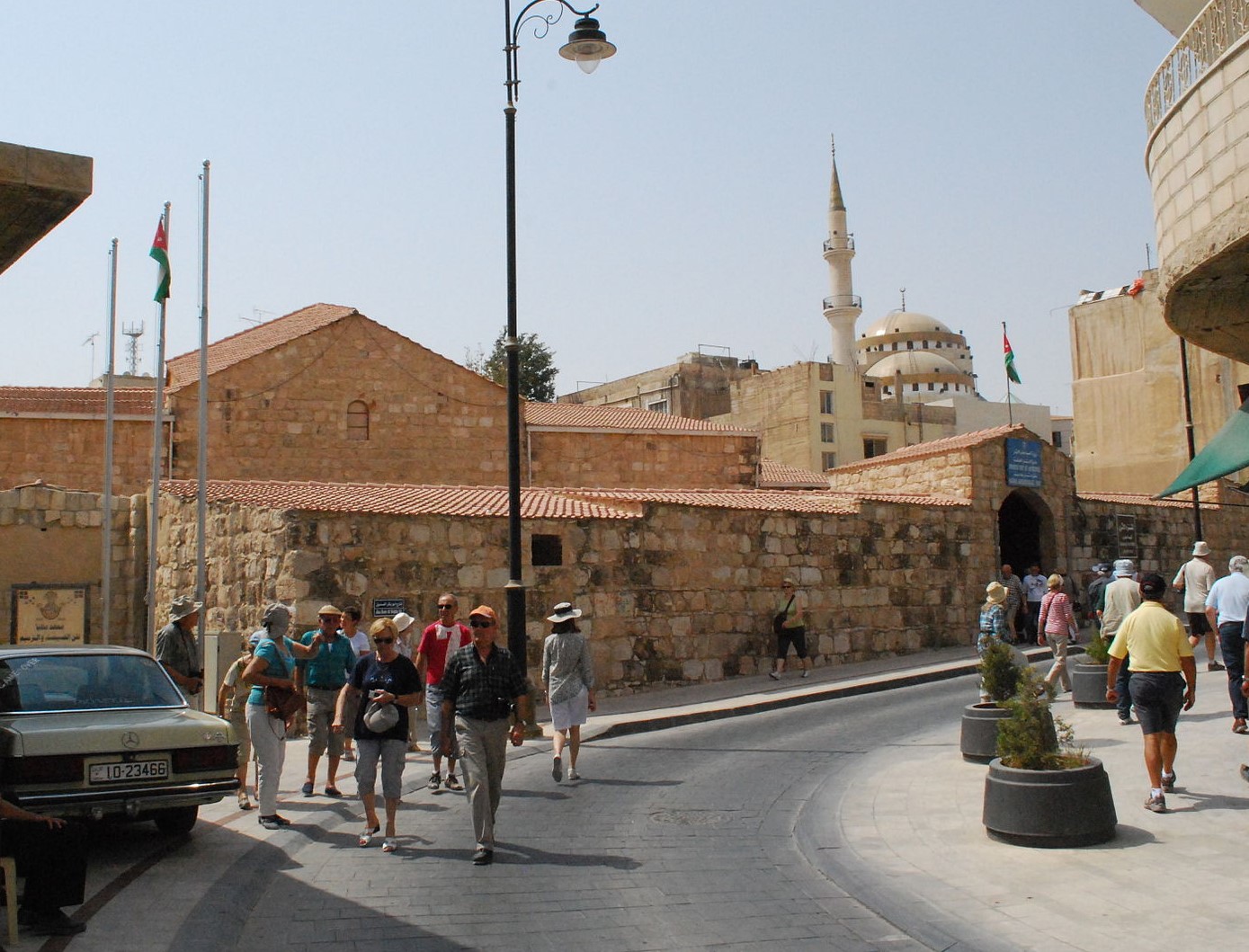

A visit to Madaba is
not complete and the religious and touristic itinerary does not end without
visiting the archaeological park, which includes many churches and parts of the
stone-paved Roman street, as well as buildings dating back to the Umayyad era
and some heritage houses, in addition to the remains of the burned palace whose
construction dates back to the seventh century AD. .
The most prominent churches in the park are: the Church of
the Virgin, the Holipotus Hall, the Cave of Llanos, the Church of the Apostles,
the Church of the Martyrs, and the Church of John the Baptist.
The tourist begins his tour to the museum and sees in the
front façade the oldest mosaic mural, which includes amazingly beautiful
pieces. The tourist walks on foot towards the ancient Roman street that extends
in the city of Madaba from east to west, and leads to the gates of its ancient
walls and extends underground for a long distance. It is also distinguished by
its paved stones, surrounded by columns covered with a layer of solid dirt
dating back to the Byzantine and Roman periods.
The tourist arrives at the Church of the Virgin, which was
built in the early sixth century, and sees manuscripts made from the indented
leaves of the acanthus plant, which contain hunting scenes and rural scenes of
the four seasons in the form of a central square with knotted circles and Greek
writing, while there is a long inscription in front of the temple barrier.
As for the third part of the park, it is the Church of the
Prophet Elias and the Crypt of Saint Janus. The church is located on the
southern side of the Roman Street, where the crypt was built and paved with
mosaics in 595 AD.
Mosaic paintings are also present in the Church of the
Apostles, which is considered one of the oldest churches in Madaba and has a
religious, historical, and archaeological status. It is a Byzantine church
built in 597 AD, and it was discovered in 1902. Its mosaic floors represent sea
gods, some marine animals, plants, and geometric shapes. The floor of this
church is considered one of the most ancient churches in Madaba. The largest
well preserved mosaic floors.
As for the Church of the Martyrs, its construction dates
back to the sixth century AD and it is one of the largest churches in Madaba.
Stones from Roman buildings were used in its construction.
In the Church of John the Baptist, the tourist sees the
ancient Moabite well, 9 meters deep and 12 wide, in addition to an icon of the
beheading of John the Baptist, and vows are offered in the shrine inside the
church.
The tourist then heads towards the Burnt Palace, which is
considered a cultural, historical and religious heritage, as it contains mosaic
floors representing daily life and an image of the so-called goddess of
victory, Tyche. Archaeologists noticed during their excavations that this
palace had been exposed to a fire in the past, and therefore they called it the
“Burning Palace.”
During his visit to Madaba, the tourist sees ten churches
containing within them the most wonderful and valuable works produced by the
Madaba Mosaic School, where the visitor sees a realistic picture of daily life
in the Byzantine era.